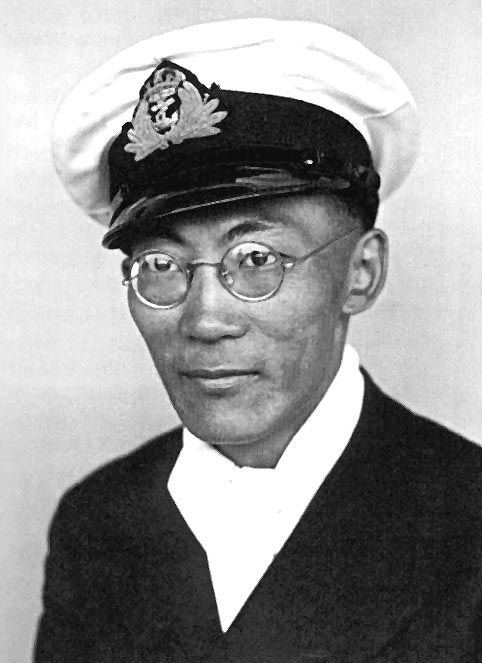William King Lowd “Lo” Lore, Royal Canadian Navy Officer (born 28 February 1909, in Victoria, BC; died 22 September 2012, in Hong Kong, China). William Lore was the first Chinese Canadian officer in the Royal Canadian Navy and first officer of Chinese descent to serve in any of the Royal Navies of the British Commonwealth. Lore served in England, Sri Lanka and Myanmar during the Second World War. At the end of the war, he helped liberate Canadian prisoners of war in Hong Kong. Lore was the first Allied officer to enter Hong Kong since its capture in 1941 (see also Canada and the Battle of Hong Kong). Lore was also the first Chinese Canadian to enter the civil service.

Early Life
William Lore was a second-generation Canadian, and like most Canadians of Chinese descent in that era he grew up in a discriminating environment in which he was denied rights and opportunities enjoyed by other Canadians (see Prejudice and Discrimination in Canada). Chinese Canadians were, for example, denied the right to vote and to practise in such professions as law and medicine.
Lore first overcame a major racial barrier when he was admitted to McGill University in Montreal to study engineering. His studies were cut short by the stock market crash of 1929 and the onset of the Great Depression. For financial reasons, Lore was forced to leave university and return to British Columbia.
Lore worked as a reporter for a Chinese newspaper in Vancouver. In 1939, Lore became the first Chinese Canadian to enter the civil service when he was employed as a wireless operator for the Department of Transport.
Discrimination in the Royal Canadian Navy
With the outbreak of the Second World War in 1939, William Lore made three attempts to enlist in the Royal Canadian Navy. He was denied each time on the grounds of his Chinese background. RCN racial policies were modelled on those of the British Royal Navy (RN), which considered it undesirable to mix white and non-white races within the confines of a ship due to concerns that the “enrolment of [non-whites] would cause immediate and continued dissatisfaction amongst white ratings.” The RN’s intent was to maintain “all Royal Navies… of Pure European Descent and of the White Race.”
On 9 November 1942, Minister of Defence for naval services Angus L. Macdonald brought to the attention of the Naval Board the fact that the Canadian Army and the Royal Canadian Air Force were accepting recruits of all races. He insisted that the RCN consider following their example. Since 1940, Macdonald had been critical of the RCN’s unquestioning acceptance of RN policy and had urged progressive change.
In May 1943, Naval Monthly Order 2653 stated that all applicants, regardless of race, were to be treated equally. An amendment that came into effect on 22 July 1944 stated, “it is ordered that any male British Subject of any racial origin may be entered for the period of hostilities in the Canadian Naval Forces.”
First Chinese Canadian RCN Officer
In January 1943, five months before the RCN officially opened its doors to racialized persons, Vice Admiral Percy W. Nelles, the RCN’s Chief of Naval Staff, personally requested that William Lore be accepted by the RCN. Lore was the first Chinese Canadian to serve in the Royal Canadian Navy and the first officer of Chinese descent to serve in any of the Royal Navies of the British Commonwealth.
In June 1943, he graduated from the officer’s training course with the rank of sub-lieutenant. His first posting was to the Operational Intelligence Centre at the Canadian Naval Services Headquarters in Ottawa. In September 1944, Lore was transferred to London, England, where he worked with the Combined Services Radio Intelligence Unit. Lore was then assigned to the South East Asia Command under Admiral Lord Louis Mountbatten. He served at a top-secret jungle camp in Ceylon (now Sri Lanka), where he participated in the planning of a major sea and air attack on Japanese-held Rangoon, Burma (now Myanmar).
Liberation of Hong Kong
William Lore was assigned to the British Pacific Fleet and was temporarily seconded to the American 7th Fleet to work with intelligence services (see Intelligence and Espionage). After the atomic bombings of Hiroshima and Nagasaki by American forces in August 1945, the Japanese government engaged in negotiations for an official surrender. Lore was with the British fleet under Rear Admiral Sir Cecil Harcourt that sailed into Hong Kong Harbour on 30 August. In recognition of the sacrifices made by Canadian soldiers in the defence of Hong Kong against overwhelming odds in December 1941 (see Canada and the Battle of Hong Kong), Harcourt chose Lore as the Canadian officer to lead a party of Royal Marines ashore.
Lore was the first Allied officer to enter Hong Kong since its capture. His party took control of the RN shore base HMS Tamar from the Japanese and liberated Canadian, British and Hong Kongese prisoners being held at the notorious Sham Shui Po prisoner of war camp. Lore’s first words to the emaciated Canadian prisoners were, “Hi, you guys, don’t you want to see a Canadian?”
On 16 September, Lore was present at the official surrender of Japanese forces in Hong Kong.

Post War and Later Years
William Lore returned to the RCN in 1946 and was promoted to lieutenant-commander. He retired from the navy in 1948. He then earned a law degree at Oxford University and moved to Hong Kong to set up a legal practice. Lore lived there until his death at the age of 103.
On learning of Lore’s passing, Vice-Admiral Paul Maddison of the RCN said, “Although it may not have been his intent, he was a hero to many others as he led the way in helping make the CF a more diverse organization and Canada a more accepting society.”

 Share on Facebook
Share on Facebook Share on X
Share on X Share by Email
Share by Email Share on Google Classroom
Share on Google Classroom